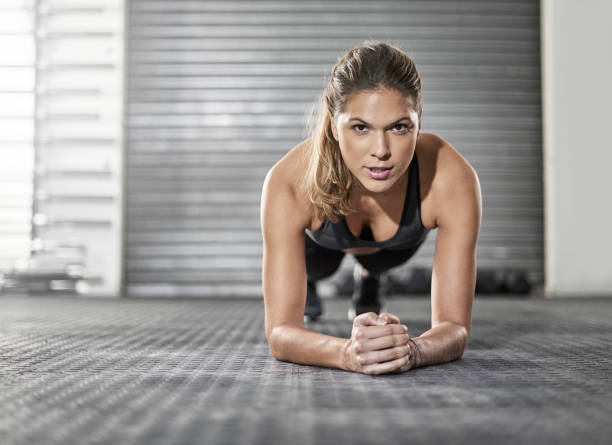Planks are more than just a static hold – they’re a versatile and effective exercise that can help you build core strength, improve posture, and enhance overall stability.
Before diving into the variations and tips, let’s take a moment to understand why plank exercises are so beneficial for your body.
Planks engage multiple muscle groups simultaneously, including the core, shoulders, arms, and legs, making them a highly efficient exercise for full-body strength and stability.
By strengthening the muscles of the core, planks can help improve posture, reduce the risk of lower back pain, and enhance overall spinal alignment and stability.
Planks are a functional exercise that mimics common movements and activities, such as lifting, carrying, and pushing, making them essential for improving everyday functional fitness and preventing injury.
Mastering Proper Form
Before you start planking away, it’s crucial to ensure you’re using proper form to maximize effectiveness and prevent injury.
Begin in a prone position on the floor, with your forearms flat on the ground and elbows directly beneath your shoulders. Your body should form a straight line from your head to your heels, with your core engaged and glutes squeezed.
Maintain a neutral spine and avoid sagging or arching your lower back. Keep your gaze focused on the floor a few inches in front of your hands to maintain proper alignment and prevent strain on your neck.
Hold the plank position for the prescribed duration, focusing on maintaining tension throughout your entire body, and breathing deeply and rhythmically.
Exploring Plank Variations
Once you’ve mastered the basic plank, it’s time to mix things up with some variations to target different muscle groups and keep your workouts challenging and exciting.
1. Side Plank
Shift your weight onto one forearm and the side of one foot, stacking your feet or placing one in front of the other for stability. Lift your hips until your body forms a straight line from head to heels, engaging your obliques and lateral muscles.
2. Plank with Shoulder Taps
From the traditional plank position, lift one hand off the ground and tap it to the opposite shoulder, then return to the starting position and repeat on the other side. Focus on keeping your hips stable and minimizing rotation as you tap each shoulder.
3. Plank Jacks
Start in the plank position, then jump your feet apart and back together, similar to a jumping jack motion. Maintain stability through your core and shoulders, and keep your hips level throughout the movement.
4. High Plank to Low Plank
Begin in a high plank position with your arms extended, then lower yourself down onto your forearms one arm at a time, maintaining a straight line from head to heels. Push back up onto your hands, returning to the high plank position, and repeat the movement.
5. Plank Knee Tucks
From the plank position, draw one knee in towards your chest, then extend it back out to the starting position and repeat on the other side. Focus on maintaining stability through your core and avoiding excessive movement in your hips.
Tips for Progression
As you become stronger and more comfortable with plank exercises, it’s important to continue challenging yourself and progressing your workouts.
1. Increase Duration
Gradually increase the amount of time you hold each plank variation to further challenge your muscles and improve endurance. Aim to add 10-15 seconds to each set as you progress.
2. Add Resistance
Place a weight plate or resistance band around your hips or shoulders to add extra resistance to your plank exercises, increasing the intensity and difficulty of the movement.
3. Experiment with Instability
Incorporate unstable surfaces, such as a balance board or exercise ball, to increase the challenge and engage more stabilizing muscles during your plank workouts.
4. Combine Plank Variations
Create a circuit or sequence by combining different plank variations back-to-back, alternating between exercises to keep your muscles guessing and maximize results.
5. Listen to Your Body
Pay attention to how your body responds to plank exercises and adjust your training intensity and volume accordingly. Focus on maintaining proper form and technique to prevent injury and get the most out of your workouts.
